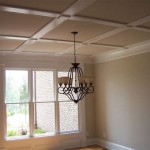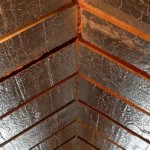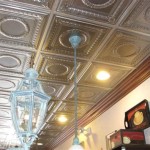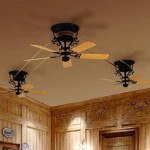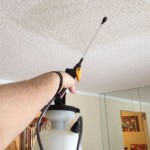How To Hang A Fan On An Angled Ceiling
Installing a ceiling fan on an angled or sloped ceiling presents unique challenges compared to a standard flat ceiling installation. The primary consideration is ensuring the fan hangs level and operates safely and efficiently. This requires specific hardware and installation techniques to accommodate the angle of the ceiling. This article provides a comprehensive guide to successfully mounting a ceiling fan on an angled ceiling.
Before commencing any work, safety should be prioritized. Ensure the power to the circuit is turned off at the breaker box. Verify the power is off using a non-contact voltage tester or multimeter to confirm no electricity is flowing to the wiring at the ceiling junction box. Gather all necessary tools and materials before starting the installation process. This proactive approach minimizes potential hazards and streamlines the installation.
A properly installed ceiling fan on an angled ceiling enhances both the aesthetics and functionality of a room. It improves air circulation, provides cooling during warmer months, and can even contribute to energy savings by reducing the need for air conditioning. Following these steps diligently ensures a safe and effective installation.
Key Point 1: Assessing the Ceiling and Selecting the Appropriate Hardware
The first crucial step is to thoroughly assess the angle and structure of the ceiling. This assessment dictates the type of mounting hardware required. A plumb bob or angle finder can be used to accurately measure the ceiling's slope. The information gathered determines the necessary downrod length and the type of mounting bracket needed.
Most ceiling fan manufacturers specify a maximum allowable slope for their fans. This information is generally available in the fan's instruction manual or on the manufacturer's website. Exceeding this maximum slope can compromise the fan's stability and performance. If the ceiling angle exceeds the manufacturer's specified limit, alternative solutions, such as modifying the ceiling structure, may be required.
Specific hardware is designed for angled ceiling fan installations. This hardware typically includes a specialized mounting bracket and a longer downrod. The mounting bracket is designed to pivot, allowing the fan to hang level despite the ceiling's slope. The downrod provides the necessary clearance between the fan blades and the ceiling, preventing them from striking the ceiling at any point in their rotation.
When selecting a downrod, consider the height of the ceiling and the desired clearance between the fan blades and the floor. A general rule of thumb is to maintain a minimum clearance of seven feet between the floor and the bottom of the fan blades. This ensures adequate headroom and prevents accidental contact with the spinning blades. A variety of downrod lengths are available, and it is important to select one that meets the specific requirements of the installation.
The junction box is another critical component to inspect. It must be rated for ceiling fan support. Older junction boxes may not be strong enough to withstand the weight and dynamic forces of a spinning ceiling fan. If the existing junction box is not rated for ceiling fans, it must be replaced with a fan-rated box securely attached to the building's structural framing. Failure to use a fan-rated box can lead to the fan detaching from the ceiling, posing a serious safety hazard.
In some cases, additional structural support may be required, especially if the existing framing is inadequate. This might involve adding bracing between ceiling joists to provide a more robust mounting platform. Consulting with a qualified contractor or structural engineer is recommended if there are any concerns about the ceiling's structural integrity.
Key Point 2: Installing the Mounting Bracket and Wiring
After gathering the appropriate hardware and assessing the ceiling, the next step is installing the mounting bracket. The specific installation procedure will vary depending on the type of bracket used, but the general principles remain the same. Start by attaching the mounting bracket to the junction box using the screws provided. Ensure the bracket is securely fastened and that it is properly aligned to accommodate the downrod.
Many angled ceiling fan mounting brackets feature a ball-and-socket joint or similar mechanism that allows the fan to pivot and hang level. This is crucial for proper fan operation and to prevent wobbling. Adjust the bracket as needed to ensure the fan will hang plumb once installed.
Next, prepare the wiring for connection. Expose the ends of the wires from both the ceiling and the fan, and strip off a small amount of insulation. Identify the neutral (white), hot (black), and ground (green or bare copper) wires. If the wiring is unfamiliar, consult a qualified electrician for assistance. Incorrect wiring can lead to electrical shock, fire, or damage to the fan.
Connect the wires from the fan to the corresponding wires from the ceiling using wire connectors (wire nuts). Twist the wires together tightly and then screw on the wire connector. Ensure the connection is secure and that no bare wire is exposed. After the wires are connected, carefully tuck them into the junction box, making sure they do not interfere with the mounting bracket or the fan motor.
The ground wire is particularly important. Connect the ground wire from the fan to the ground wire in the junction box and to the grounding terminal on the mounting bracket. This creates a safe path for electrical current in the event of a fault, protecting against electrical shock.
After wiring, double-check all connections and ensure the wires are neatly arranged within the junction box. This will prevent strain on the wires and reduce the risk of them coming loose over time. Replace the junction box cover plate, if necessary, to conceal the wiring and provide a finished look.
Key Point 3: Assembling and Hanging the Fan
With the mounting bracket installed and the wiring completed, the next step is to assemble the fan motor and attach the downrod. Follow the manufacturer's instructions carefully, as the specific assembly procedure can vary depending on the fan model. Generally, this involves attaching the fan blades to the motor housing and then connecting the downrod to the motor.
Before attaching the downrod, run the fan wires through the downrod. These wires will connect to the wiring in the ceiling junction box. Ensure the wires are not pinched or damaged during this process. Some fans come with pre-wired downrods, which simplifies this step.
Carefully lift the assembled fan motor and downrod and insert the downrod into the mounting bracket. Secure the downrod in the bracket according to the manufacturer's instructions. This typically involves tightening screws or locking pins to secure the downrod in place. Ensure the downrod is firmly seated in the bracket and that there is no play or movement.
Once the fan is hanging from the mounting bracket, make the final electrical connections. Connect the wires from the fan motor to the wires in the junction box, following the same color coding as before. Double-check all connections to ensure they are secure and correct.
Carefully slide the fan canopy up to cover the mounting bracket and wiring. Secure the canopy to the mounting bracket using the screws provided. The canopy should fit snugly against the ceiling, concealing the mounting hardware and creating a clean, finished appearance.
Finally, install the fan blades and any remaining accessories, such as light kits or decorative trim. Follow the manufacturer's instructions carefully for each component. Ensure all screws are tightened and that all parts are securely attached. Double-check that the fan blades are balanced and that they will not strike the ceiling or any other objects in the room.
After completing the installation, restore power to the circuit breaker and test the fan. Verify that the fan operates at all speeds and that the lights, if included, function correctly. If the fan wobbles excessively, adjustments may be necessary. Refer to the manufacturer's instructions for troubleshooting tips and balancing procedures.
Installing a ceiling fan on an angled ceiling requires careful planning, precise measurements, and attention to detail. By following these steps and adhering to the manufacturer's instructions, a safe and effective installation can be achieved, enhancing both the comfort and aesthetics of the space.

How To Install A Ceiling Fan On Sloped Lemon Thistle

How To Install A Ceiling Fan On Sloped Lemon Thistle

How To Choose A Ceiling Fan For Vaulted Ceilings Lightology

How To Find Ceiling Fans Slope Adapters And Downrods For Angled Ceilings Delmarfans Com

Fans On An Angle Installing Ceiling Angled Or Raked

How To Choose A Ceiling Fan For Vaulted Ceilings Lightology

Ensuring Proper Ceiling Fan Installation With Vaulted Ceilings

Ceiling Fans For Angled Ceilings

Hunter Fans How To Install Your Ceiling Fan Cpo S

Hunter Vaulted Ceiling Fan Mount 22170 The Home Depot
Related Posts

